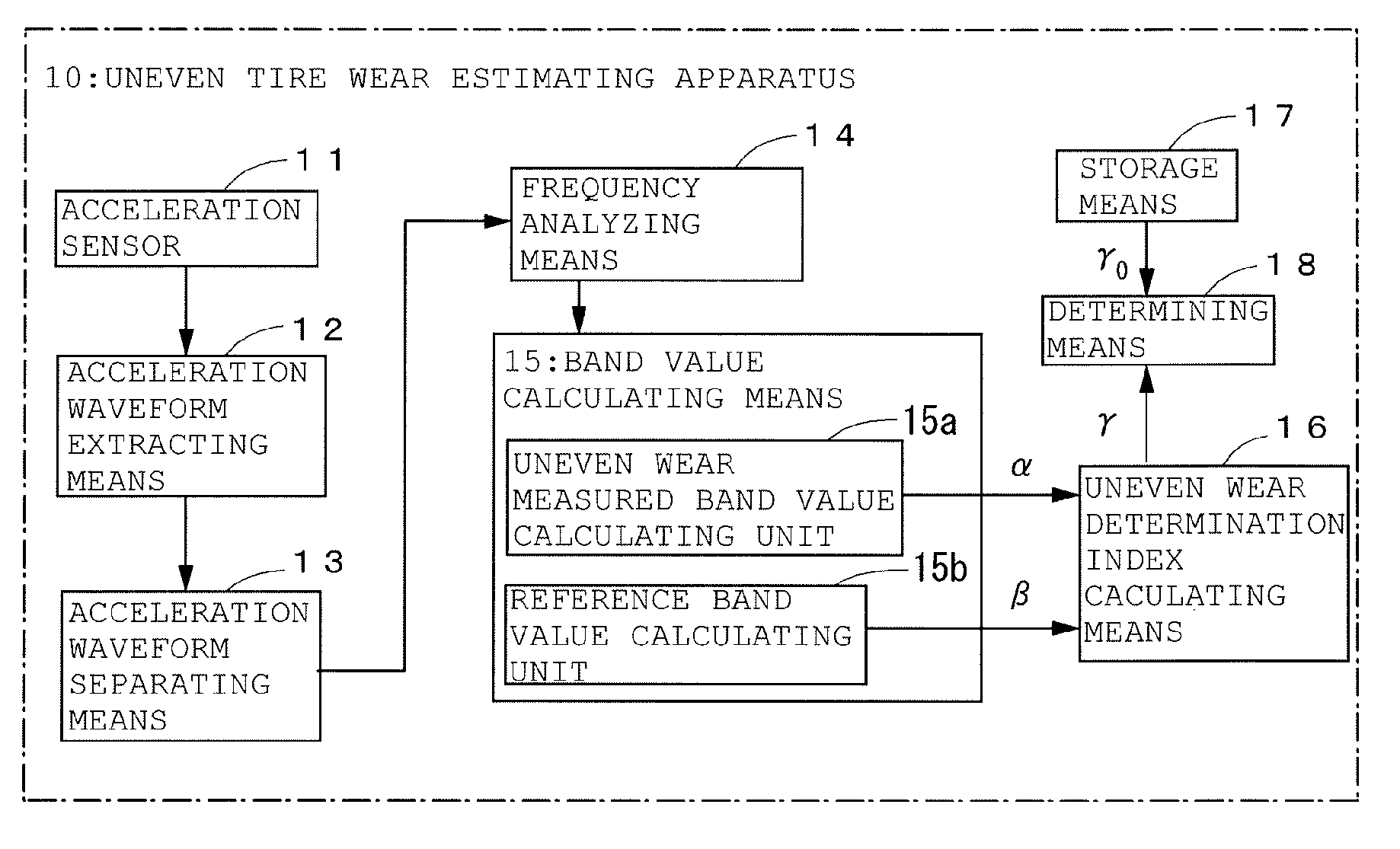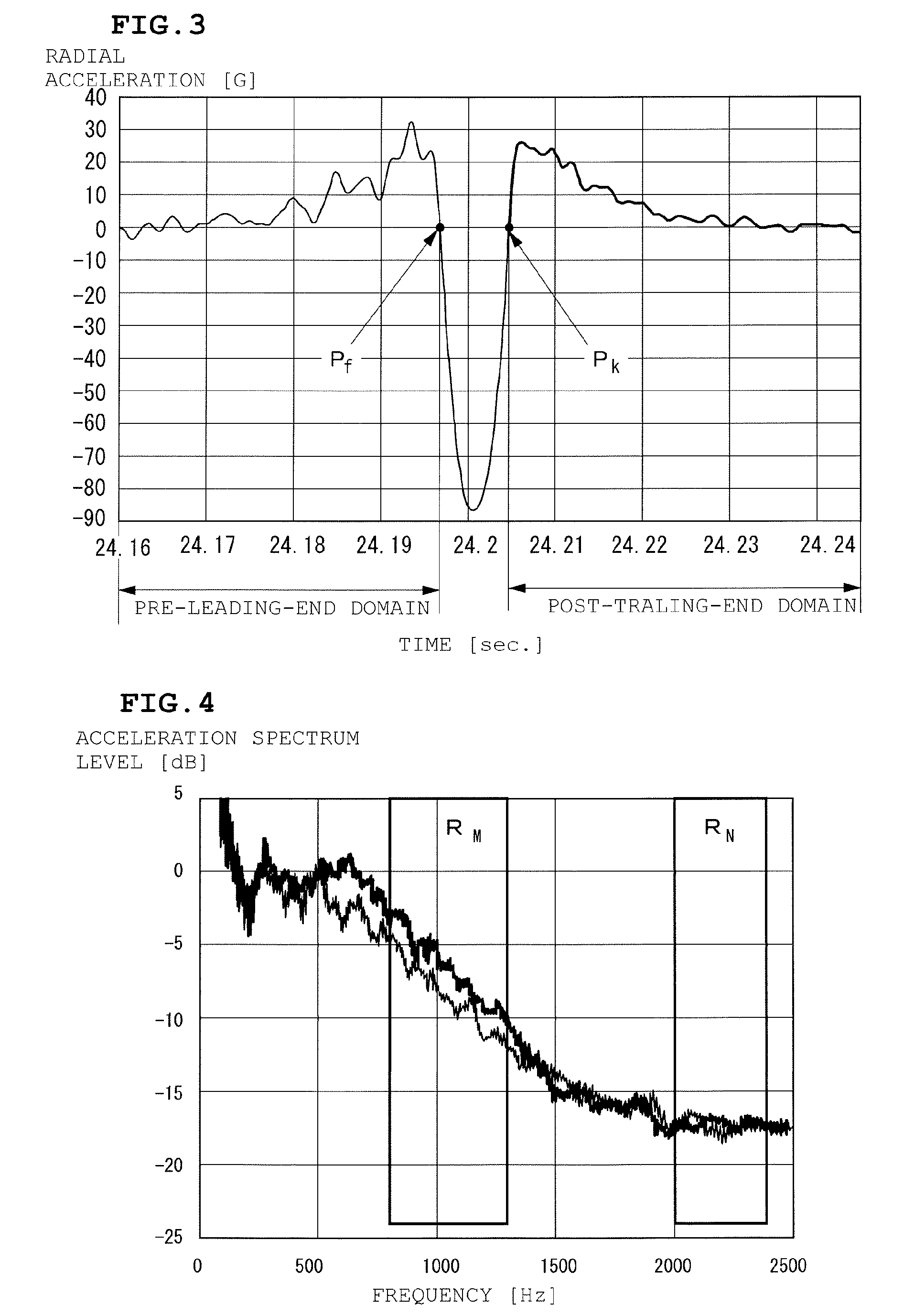Method and apparatus for estimating uneven tire wear
a tire wear and tire technology, applied in vehicle tyre testing, instrumentation, processing detected response signals, etc., can solve the problems of differences in the amount of wear between the central part and the shoulder parts of the tire tread, and tire wear in the tread surface, so as to improve the accuracy of estimating uneven wear in the tire shoulder, reduce the number of sensors, and reduce the effect of nois
- Summary
- Abstract
- Description
- Claims
- Application Information
AI Technical Summary
Benefits of technology
Problems solved by technology
Method used
Image
Examples
example
[0055]A vehicle fitted with a test tire having an acceleration sensor disposed at the axial center on the inner liner was prepared. The acceleration sensor was so disposed to have the detection direction in the radial direction of the tire. While the vehicle was operated at speeds of 60 km / hr to 80 km / hr, the radial acceleration waveforms and the frequency spectrums of the post-trailing-end waveforms were obtained by the storage and computing units mounted on the vehicle body for processing the output signals of the acceleration sensor. FIG. 3 shows a radial acceleration waveform when the test vehicle was operated at a speed of 80 km / hr. FIG. 4 shows frequency spectrums of post-trailing-end waveforms.
[0056]The size of the test tire was 315 / 70R22.5.
[0057]Also, two types of vehicles “loaded vehicle” and “half-loaded vehicle” were operated as the test vehicle, and the effects of loading were investigated. The load of the “loaded vehicle” was 2.85 tons, and that of the “half-loaded vehi...
PUM
| Property | Measurement | Unit |
|---|---|---|
| frequency | aaaaa | aaaaa |
| frequency | aaaaa | aaaaa |
| speeds | aaaaa | aaaaa |
Abstract
Description
Claims
Application Information
 Login to View More
Login to View More - R&D
- Intellectual Property
- Life Sciences
- Materials
- Tech Scout
- Unparalleled Data Quality
- Higher Quality Content
- 60% Fewer Hallucinations
Browse by: Latest US Patents, China's latest patents, Technical Efficacy Thesaurus, Application Domain, Technology Topic, Popular Technical Reports.
© 2025 PatSnap. All rights reserved.Legal|Privacy policy|Modern Slavery Act Transparency Statement|Sitemap|About US| Contact US: help@patsnap.com



